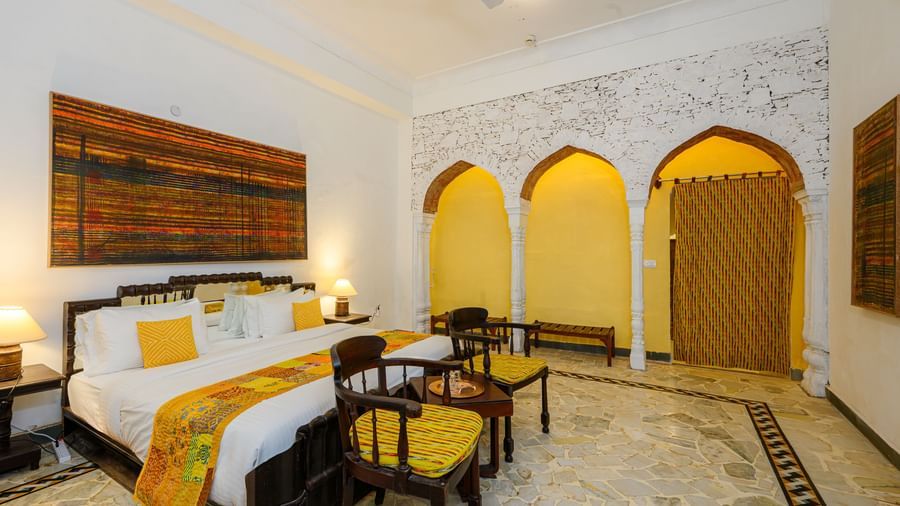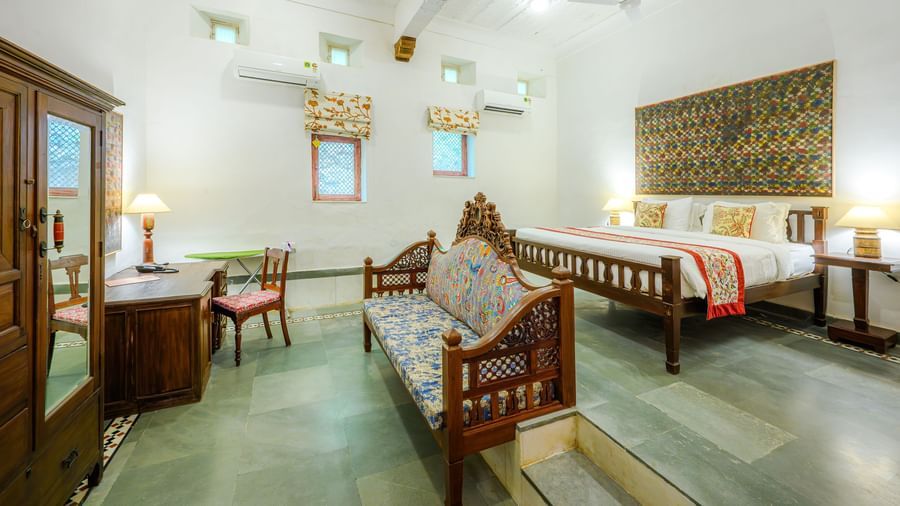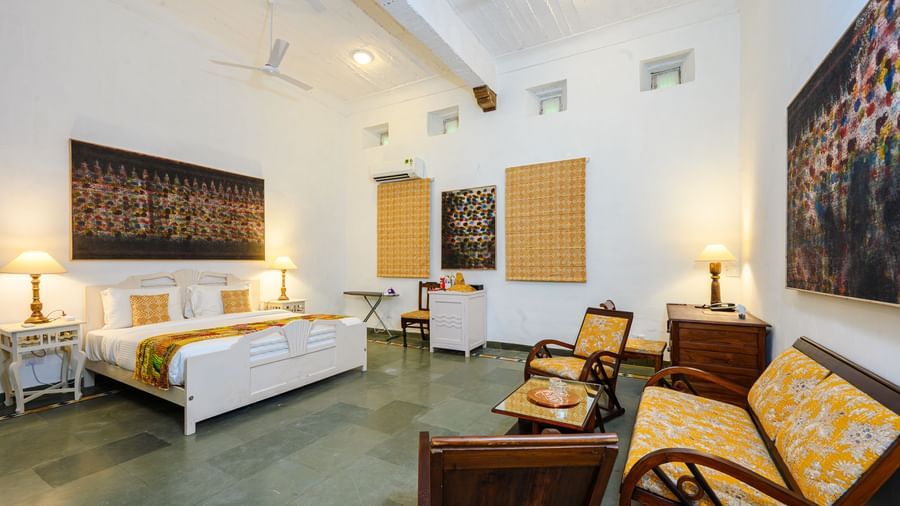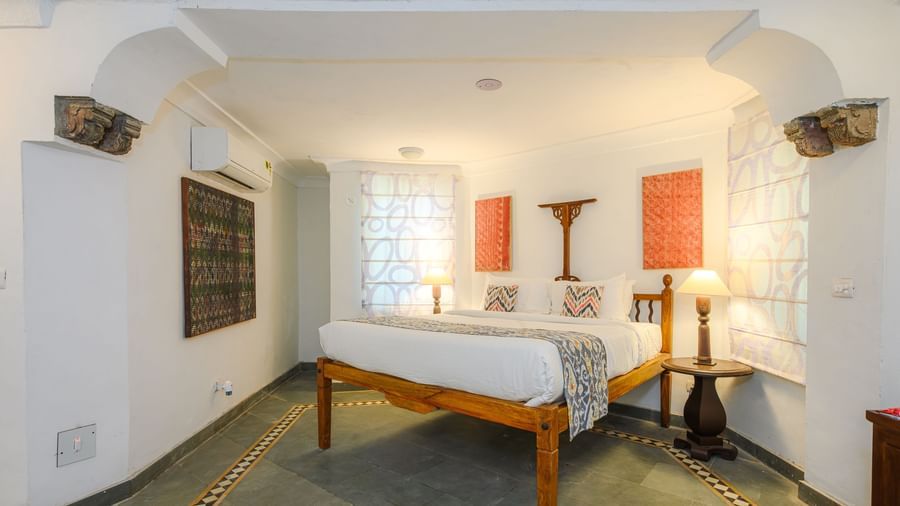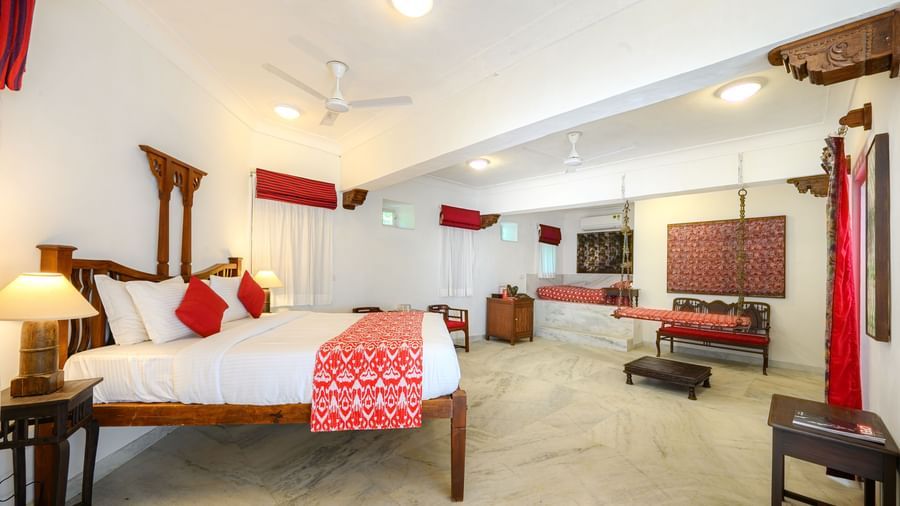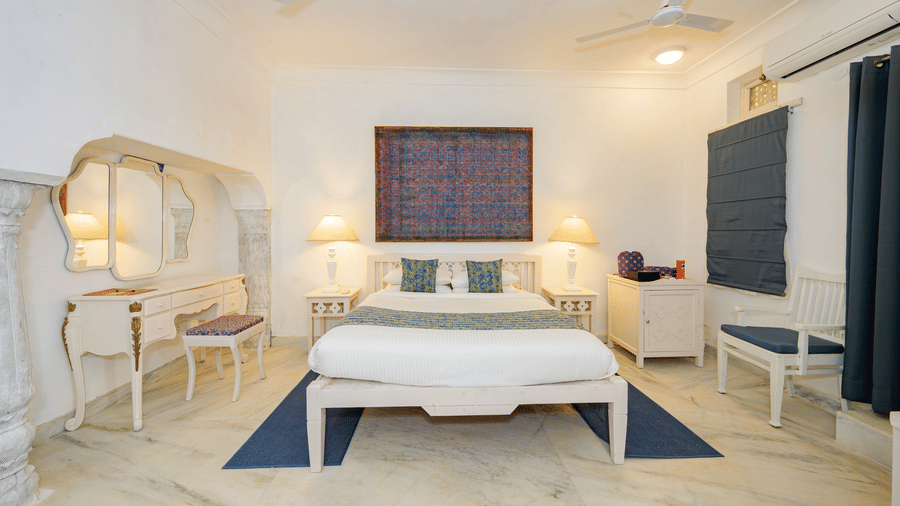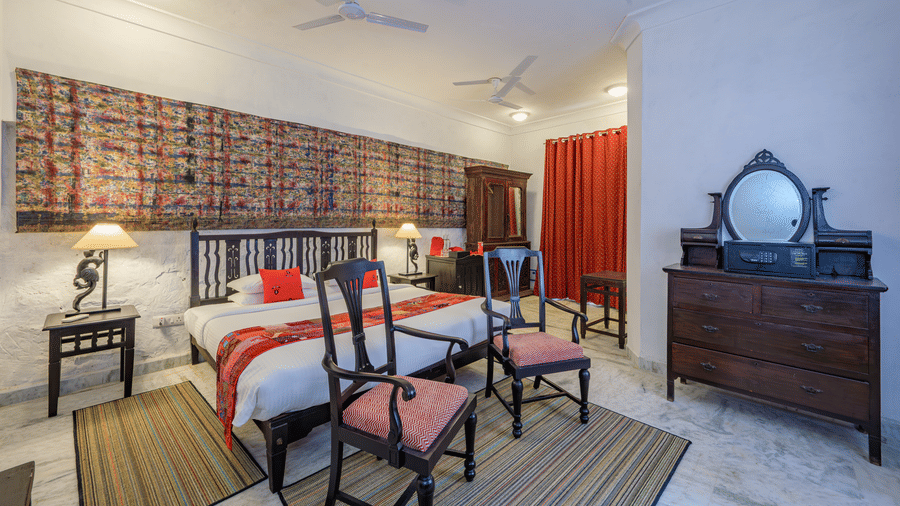Situated on the north-eastern edge of the Fort-Palace, this spacious room is named after the fish avatara – the first of the ten incarnations of Vishnu, from which Darwin possibly drew inspiration for his Evolution of Man theory.
Situated on the north-eastern edge of the Fort-Palace, this spacious room is named after the tortoise – the second incarnation of Vishnu, from which Darwin possibly drew inspiration for his Evolution of Man theory.
Situated on the north-eastern edge of the Fort-Palace, this spacious room is named after the wild boar avatara – the third incarnation of Vishnu, from which Darwin possibly drew inspiration for his Evolution of Man theory.
Situated on the north-eastern edge of the Fort-Palace, this spacious room is named after the fourth half man-half lion incarnation of Vishnu, from which Darwin possibly drew inspiration for his Evolution of Man theory.
Up a flight of stairs, the Vaman Mahal is named after the fifth, dwarf incarnation of Vishnu, from which Darwin possibly drew inspiration for his theory on the evolution of Man.
Up a flight of stairs, this room is named after the Parashurama avatar – the sixth of the ten incarnations of Vishnu, from which Darwin possibly drew inspiration for his Evolution of Man theory. It overlooks the 2-billion-year old Aravalli hills and the dunes below. The room offers outdoor seating under a pipal tree.
Up a flight of stairs, this room is named after the Ramachandra avatar – the seventh of the ten incarnations of Vishnu, from which Darwin possibly drew inspiration for his Evolution of Man theory. It overlooks the Solah Khambe and the Uncha Bagh gardens as well as the hills and the village below.
